There are many varieties of metal choices available for jewelry today. Whether you like the classic gold and platinum, the affordability of tungsten or cobalt, or the durability of titanium or tantalum, you can find great jewelry pieces and some even combine two metals. Alternative metals give you additional options in look, strength, and price. Each choice has its own benefits and qualities, so base your choice on the ones that fits you the most.
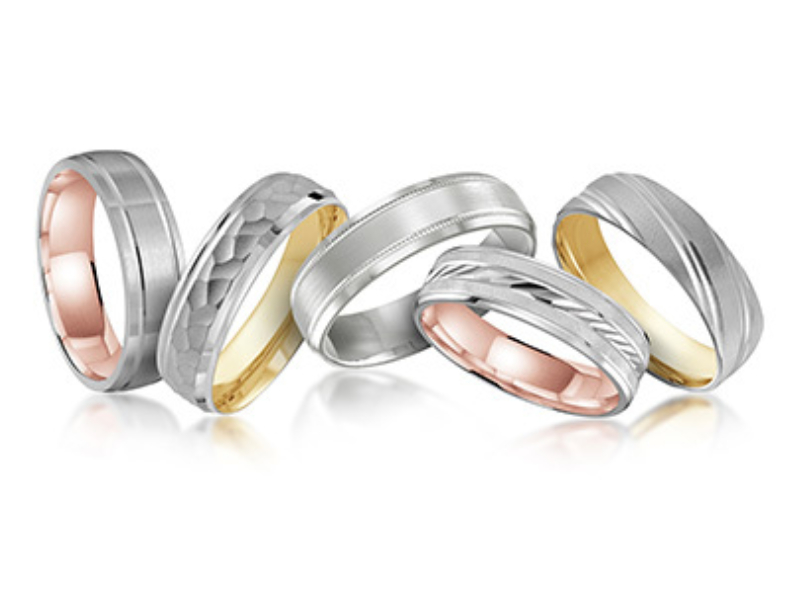
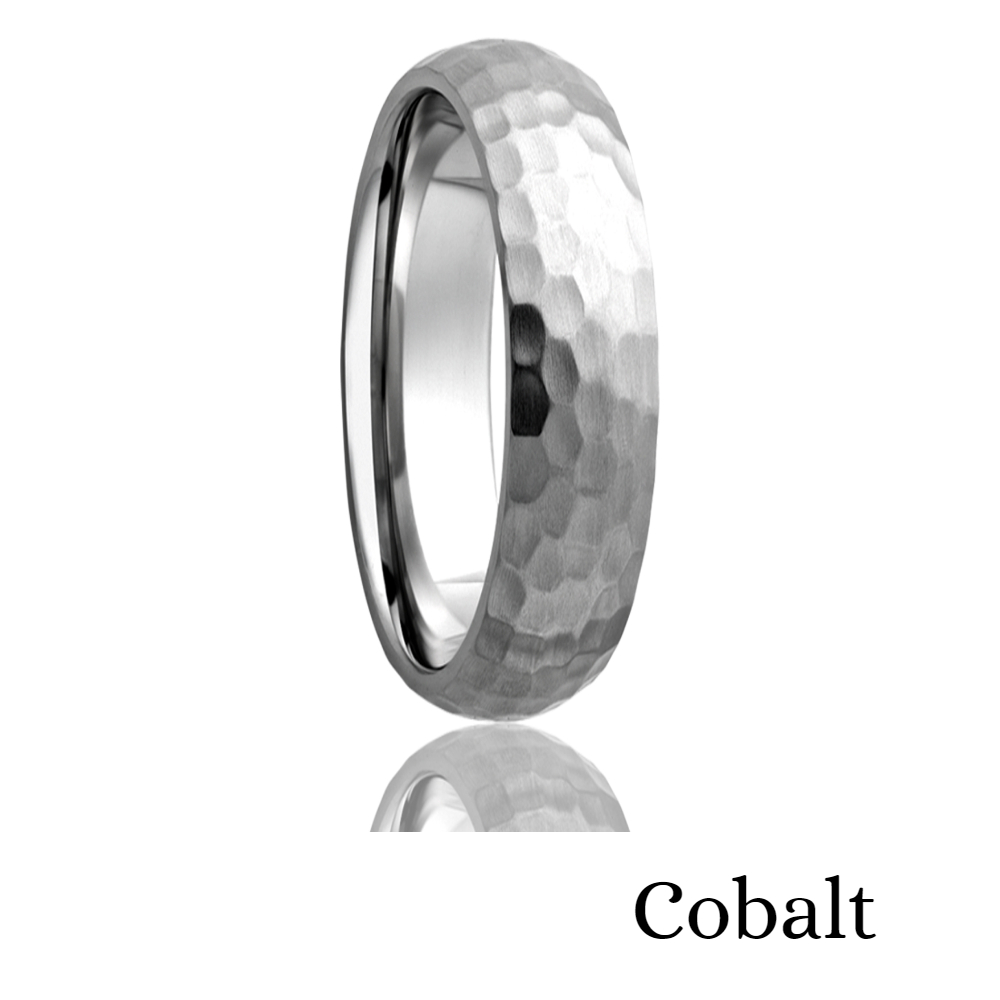
Cobalt Chrome
Cobalt has a similar look to platinum, with great strength but a much lighter weight. This metal is usually die cast and cannot be sized by conventional methods. If you need another size later, you will have to replace the ring with a new one the correct size. Cobalt alloys are often used in surgical implants and engine turbines.
Damascus Steel
Damascus Steel involves an ancient sword-making technique from the Middle East. Two types of Stainless Steel are twisted together by hand and fold them into a circle making unique patterns and designs. Either alone or paired with gold or an alternative metal, each ring design is unique and stunning. This metal is usually made to size and cannot be sized by conventional methods. If you need another size later, you will have to replace the ring with a new one the correct size.


Gold
Gold is the most common in fine jewelry. Pure 24 karat gold is rarely used in jewelry because it is too soft for everyday wear. When gold is mixed with alloys like copper, silver, nickel, and zinc, it gives it different colors, strength, and durability. Gold is traditionally seen in yellow, rose, and white colors, but can also be available in green. Measured in karats, gold’s purity is indicated by how many parts of gold (24 parts) vs. alloy. For example, 14kt gold contains 14/24 gold and 10/24 alloy, while 10kt gold contains 10/24 gold and 14/24 alloy.
Meteorite
Meteorite pieces often contain varied rock and metal pieces from outer space. They have grooved latticed patterns formed as the meteors cooled over millions of years on the Earth’s surface. Because of this, each ring formed from this metal will be different. They are most often found as inlays to increase durability. This metal is usually made to size and cannot be sized by conventional methods. If you need another size later, you will have to replace the ring with a new one the correct size.
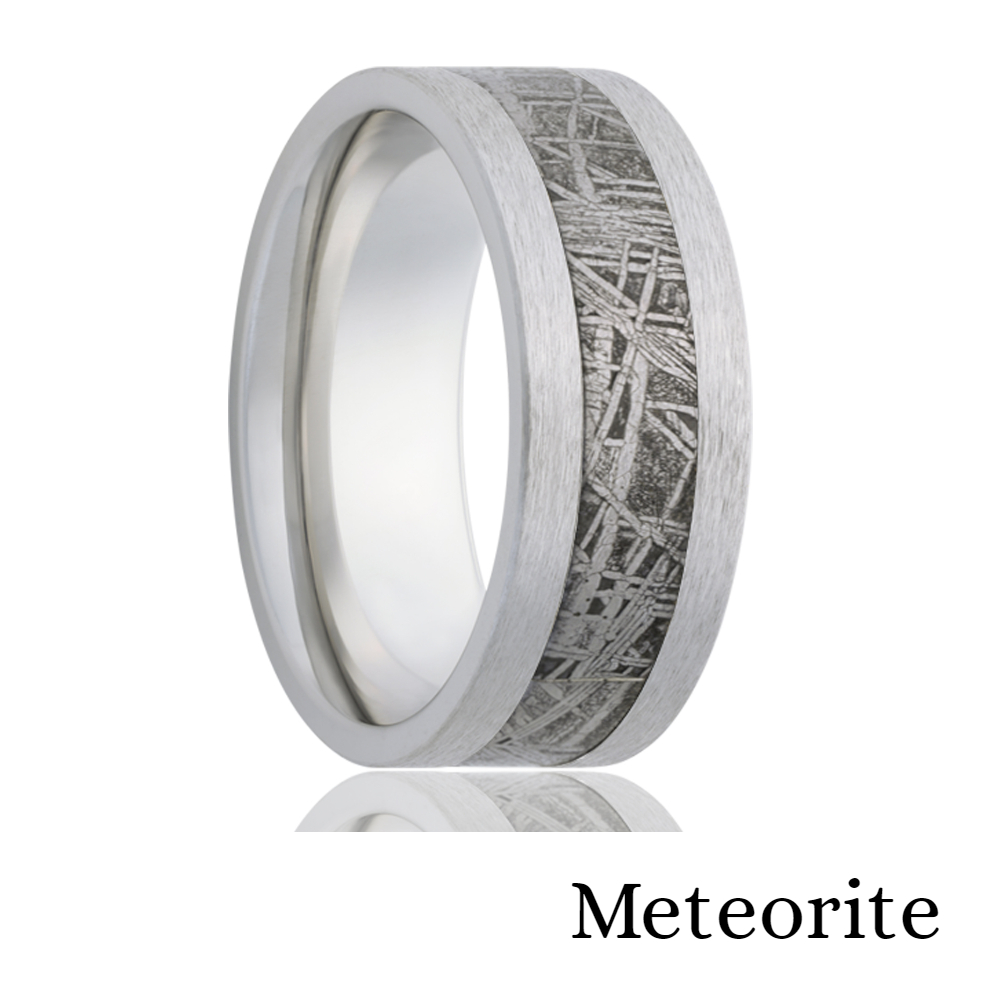
Platinum
Platinum has long been the Cadillac of white metals. Platinum is generally 90% to 95% pure and does not tarnish or need to be rhodium plated like white gold in order to keep its white luster. Platinum is the heaviest of all the precious metals. It weighs almost twice as much as karat gold. Its purity makes it hypoallergenic, perfect for people who are sensitive to the alloys used in gold. While one of the most expensive of the precious metals, it gives one many years of wear with low maintenance.
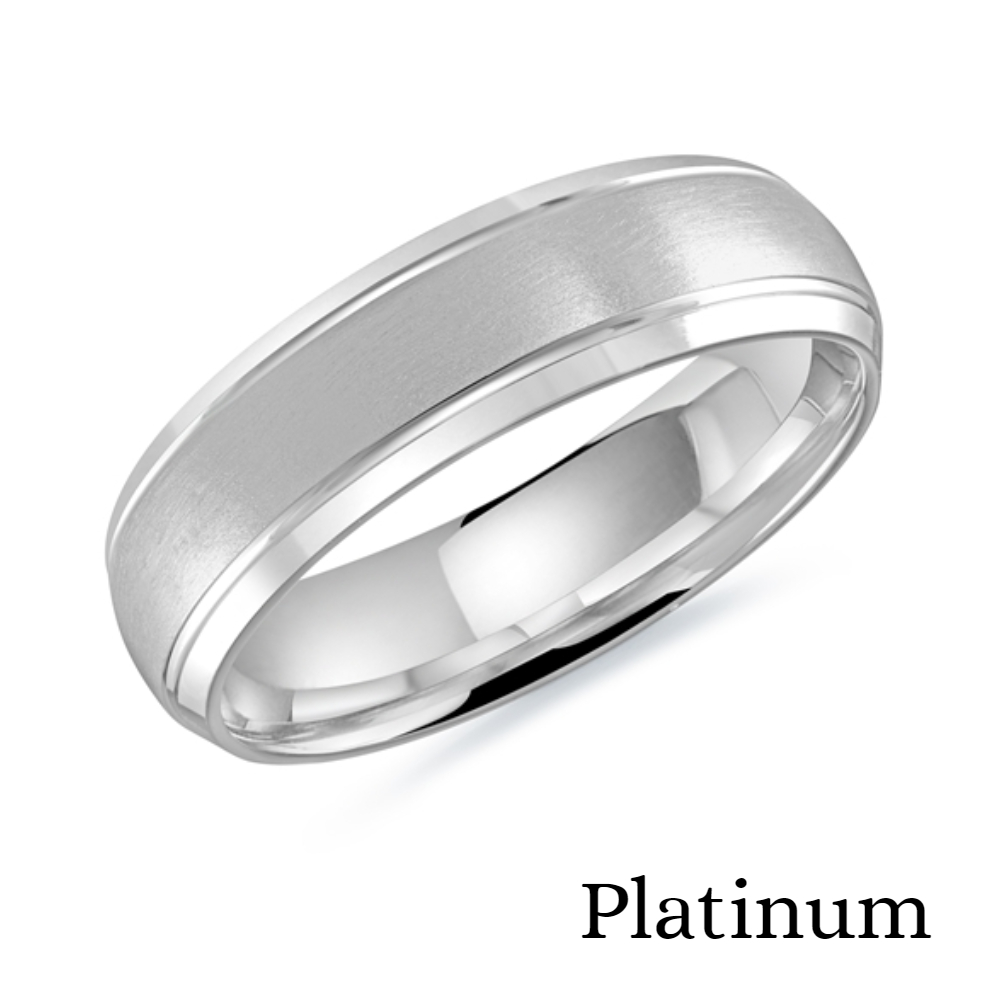

Stainless Steel
Stainless steel is an affordable alternative to traditional metals. It is naturally hypoallergenic and will not rust or tarnish. Stainless Steel will not break or bend under normal usage and is stronger than any other alloy. This metal is usually made to size and cannot be sized by conventional methods. If you need another size later, you will have to replace the ring with a new one the correct size.
Sterling Silver
Sterling silver is usually 92.5% silver and 7.5% copper. Silver is much more plentiful than platinum or gold and is much less expensive. It takes on a much higher polish than any other metal, but it does tarnish. The tarnish can be removed, but silver requires much more care than other metals.

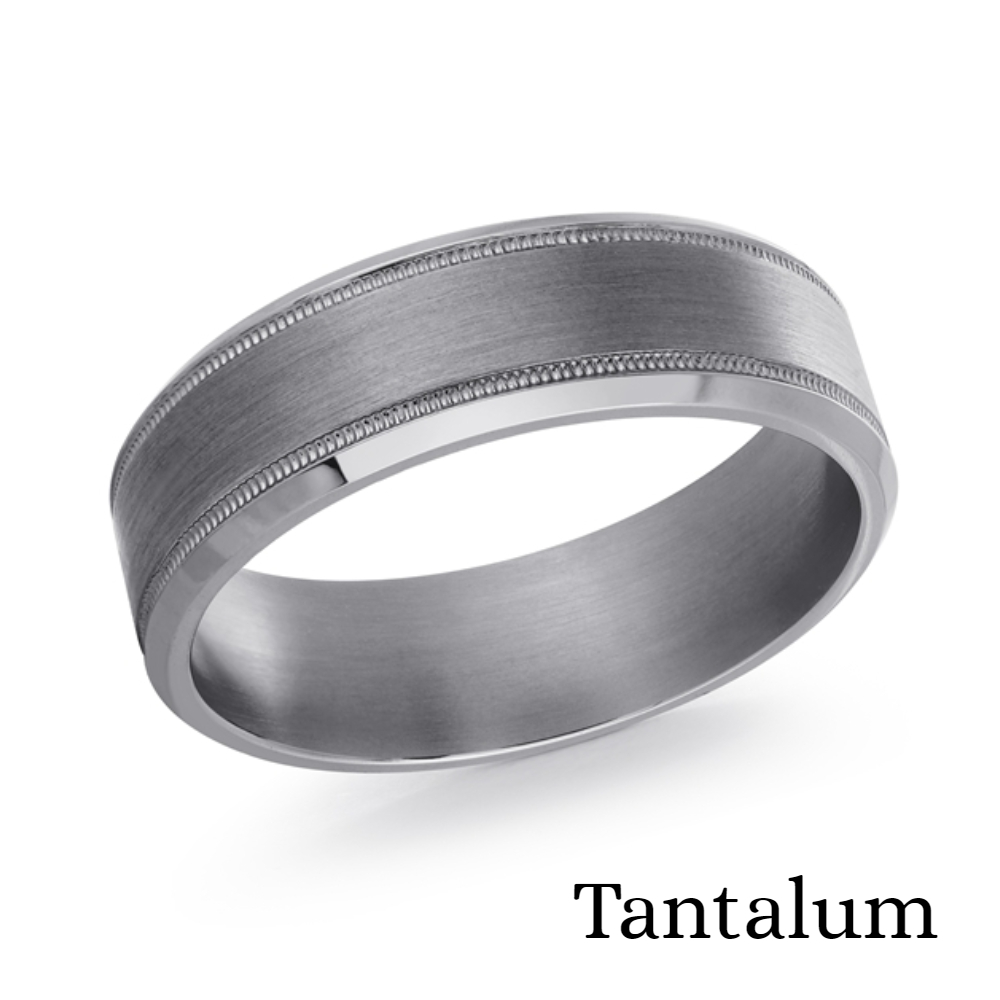
Tantalum
Tantalum is a rugged option, perfect for those that work with their hands. It is extremely durable, hypoallergenic, and resistant to scratches & corrosion. Many (non-precious) metals cannot be resized.
Tantalum however is extremely malleable and can be resized. It will bend, rather than shatter and can be easily cut off in an emergency. Tantalum is highly resistant to the usual wear and tear of some non-precious metals meaning your ring will look better for longer and keep its color.
Titanium
Titanium is a light, strong, and corrosion-resistant metal. Titanium offers you seven times the strength of platinum at about 1/3 of the weight. It is the hardest natural metal on earth and therefore offers more scratch resistance than gold or silver. In addition, titanium is also hypoallergenic. When ordering titanium rings, be extra sure about your ring size. This metal is usually made to size and cannot be sized by conventional methods. If you need another size later, you will have to replace the ring with a new one the correct size.


Tungsten
Tungsten is the hardest, most scratch resistant material on the market. Its natural color is a dark gun metal gray. Tungsten is alloyed with a nickel base to offer the permanent high polish finish. Tungsten has limitations on capabilities because of its hardness. Tungsten carbide is often used in tooling and grinding. This metal is usually made to size and cannot be sized by conventional methods. If you need another size later, you will have to replace the ring with a new one the correct size.
Zirconium
Zirconium is utilized in nuclear reactors and explosive wartime applications. It is very resistant to decay and heat. While most commonly mined from South Africa and Australia, zirconium has also been found in meteorites and moon rocks. It is naturally a silver-grey color with a darker oxidized layer. This metal is usually made to size and cannot be sized by conventional methods. If you need another size later, you will have to replace the ring with a new one the correct size.

